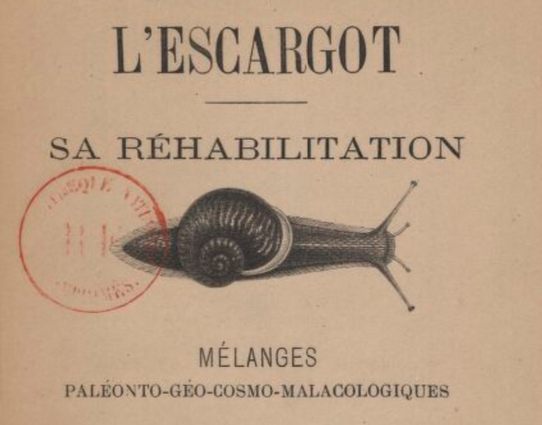Titre du jour :
"L'Escargot : sa réhabilitation, mélanges paléonto-géocosmo-malacologiques" <3
https://gallica.bnf.fr/ark:/12148/bpt6k11707905/f5 #animhist
Recent searches
Search options
#animhist
Ce matin, sur le campus, j'ai vu une superbe buse variable (morphe brun) sur le poing de son fauconnier.
Je regrette de ne pas avoir pris de photo !
Elle était là je pense dans le cadre de campagne d'éffarouchement.
https://www.avipur.com/nos-prestations/nuisibles/depigeonnisation/ #animhist
"Cornips has analysed recordings to show that cows will simplify their vocalisation once a farmer recognises their need. Rather than having their intelligence bred out of them to be more compliant, Cornips thinks domestic animals are forced to develop a fuller communication repertoire than wild animals."
https://www.bbc.com/future/article/20250204-the-linguists-studying-how-cows-talk-to-each-other-in-language?utm_source=clivethompson&utm_medium=email&utm_campaign=linkfest-32-technofossils-sticktok-and-a-web-site
#animhist
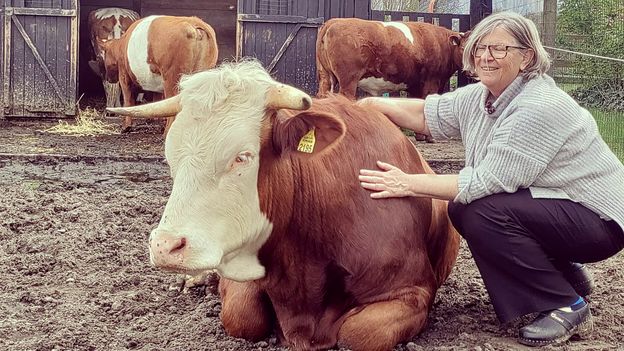
"Nous avons plusieurs fois entendu raconter à [Benjamin] Franklin, qu’il avoit observé dans les forêts de l’Amérique septentrionale, une espèce d’oiseau qui, de même, que le kamichi, ou les vanneaux armés, porte deux tubercules cornus aux coudes des ailes. Ces deux tubercules deviennent, disoit-il, à la mort de l’oiseau, les germes de deux tiges végétales, qui croissent d’abord en pompant les sucs de son cadavre, et qui s’attachent ensuite à la terre, pour y vivre à la manière des plantes et des arbres. Plusieurs savans naturalistes, et entre autres mon illustre collègue Lacépède, à qui j’ai parlé de ce fait, l’ignorent absolument : ainsi, malgré la grande véracité de Franklin, je ne le cite qu’avec beaucoup de réserve ; et je n’en tire aucune conclusion."
Cabanis, 1805.
Il s'agit peut-être du hoazin, oiseau remarquable des forêts tropicales sud-américaines, mais ses griffes ne sont présentes que chez les jeunes.
Je proposerais un jacana, soit roux, soit, plus probablement noir :
https://fr.wikipedia.org/wiki/Jacana_noir
https://fr.wikisource.org/wiki/Rapports_du_physique_et_du_moral_de_l%E2%80%99homme/Dixi%C3%A8me_M%C3%A9moire#cite_note-p310-8
#animhist
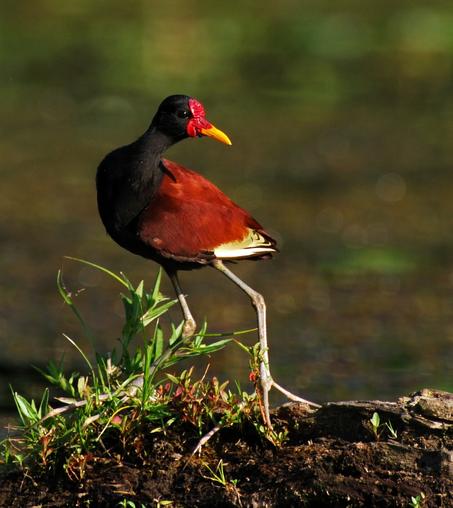
"On sait aussi par Cléarque, que cite Athénée, qu'à Trézène, les poulpes (comme du reste les argonautes) étaient regardés comme sacrés : il etait interdit de les pêcher."
#animhist
https://archive.org/details/lapieuvre0000roge/page/22/mode/2up?view=theater

"Hugh's primary emblem is a white swan, in reference to (...) the wild swan that would eat from his hand and follow him about, and would attack anyone else who came near Hugh."
Alors comment vous dire... En fait.
Du point de vue du cygne, il était en couple exclusif avec votre évêque :p
https://en.wikipedia.org/wiki/Hugh_of_Lincoln#Iconography
#animhist cc @podittmar
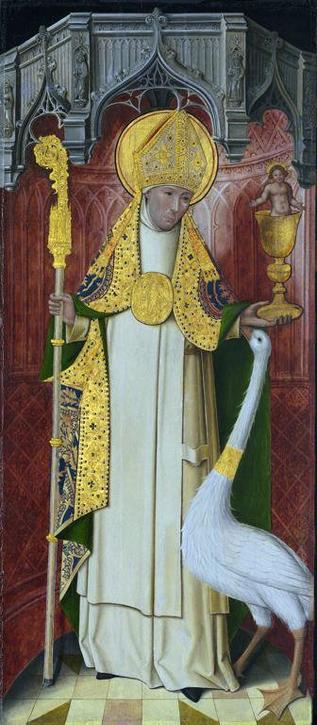
“That’s quite a strong result for telling us that feral dogs are not an established pest population in the wild in Australia,”
(...)
“We have a saying amongst our mob, if it looks like a dingo and it acts like a dingo, it is a dingo.”
https://www.theguardian.com/australia-news/2022/apr/06/most-wild-dogs-killed-across-rural-australia-are-pure-dingoes-dna-research-says
#animhist
#agenda Le vendredi 4 avril, à 17h, dans le cadre de l'atelier Ecologies of Early Modern art, Charlotte Colding Smith présentera en ligne :
"#Whale Strandings and Capture as Indicators of Seventeenth-Century Environmental Change"
https://arthist.net/archive/44908
#animhist #artsci #sciart #histsci #histart
(illustration : https://commons.wikimedia.org/wiki/File:The-whale-beached-1617.jpg )
Demain, 17h en ligne, une conférence alléchante du toujours fascinant CESMR sur l'usage d'animaux dans la materia medica de la Renaissance italienne.
https://csmbr.fondazionecomel.org/events/online-lectures/animals-recipes/
#animhist #histmed #histsci #MaterialCulture
"Le visage, qui est très souvent décrit comme la partie la plus humanoïde de l’animal, met le πίθηκος [singe] très en haut dans l’échelle des animaux les plus ressemblants à l’homme (juste avant l’ours, le porc ou certains rapaces nocturnes)"
https://theses.hal.science/tel-04861112v1/ #animhist
Rare modern-day representation of Europe as the mythological Europa on her Jovian bull:
https://diaspodon.fr/@kyoku57/114176805745128071
#animhist

"Voici la coutume chez les rois lorsqu’ils achètent des chevaux : ils les examinent couverts, afin que, si une belle allure, comme souvent, repose sur un pied fragile, elle ne trompe pas l’acquéreur, bouche bée devant une belle croupe, une petite tête ou une haute encolure."
Horace, Satires, I, 2, 86-89 ; trad. Bénédicte Delignon.
Pas de pied, pas de cheval, mais ça semble un peu extrême.
https://books.openedition.org/pur/30500?lang=en #animhist
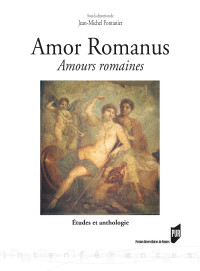
Deux murènes et une superbe torpille ocellée sur les fresques récemment exhumées à Pompéi.
#histnat #animhist
https://www.smithsonianmag.com/smart-news/see-the-stunning-frescoes-of-a-mysterious-dionysian-cult-discovered-in-ancient-pompeii-180986133/
Unexpected Ostrich: Gombault & Macée edition
(a bustard would make more sense, but here we are)
https://collections.musees-normandie.fr/ark:/16418/msl1110951/v0004.simple.selectedTab=thumbnail
#animhist
Unexpected Ostrich: Justice edition.
https://www.europeana.eu/fr/item/89/item_637IAGQ2SICHZIAJ4UHDMAQWG3R2KRMK
#animhist
3. Les Animaux célèbres, de Michel Pastoureau. Un classique, et un bon livre de métro (chapitres courts).
#animhist #lectures2025
"The Tudor family with monkeys:
(a) Margaret Tudor, Queen of Scotland, with a marmoset. The painting and a version
by Mytens were copied from a lost original thought to be by a French artist, possibly Jean Clouet or Jean Perreal. The inscription in the
Mytens copy ‘Aetatis suae 26’ indicates 1514/1515 as the date of the original.
(b) Portrait of a Boy with a marmoset by Hans Holbein, c.
1526. The boy was likely Henry Fitzroy, the future king Edward VI.
(c) Caterina di Aragona with a blond capuchin monkey ‑ Miniature.
There are two versions of this miniature, the other is by Lucas Horenbout, 1527."
from Primates in History, Myth, Art, and Science, Cecilia Veracini, Bernard Wood (eds.), 2024. p187.
#animhist
La chasse au cétacé aux Indes vue par Theodore de Bry :
https://www.christies.com/en/lot/lot-6368244
#animhist


